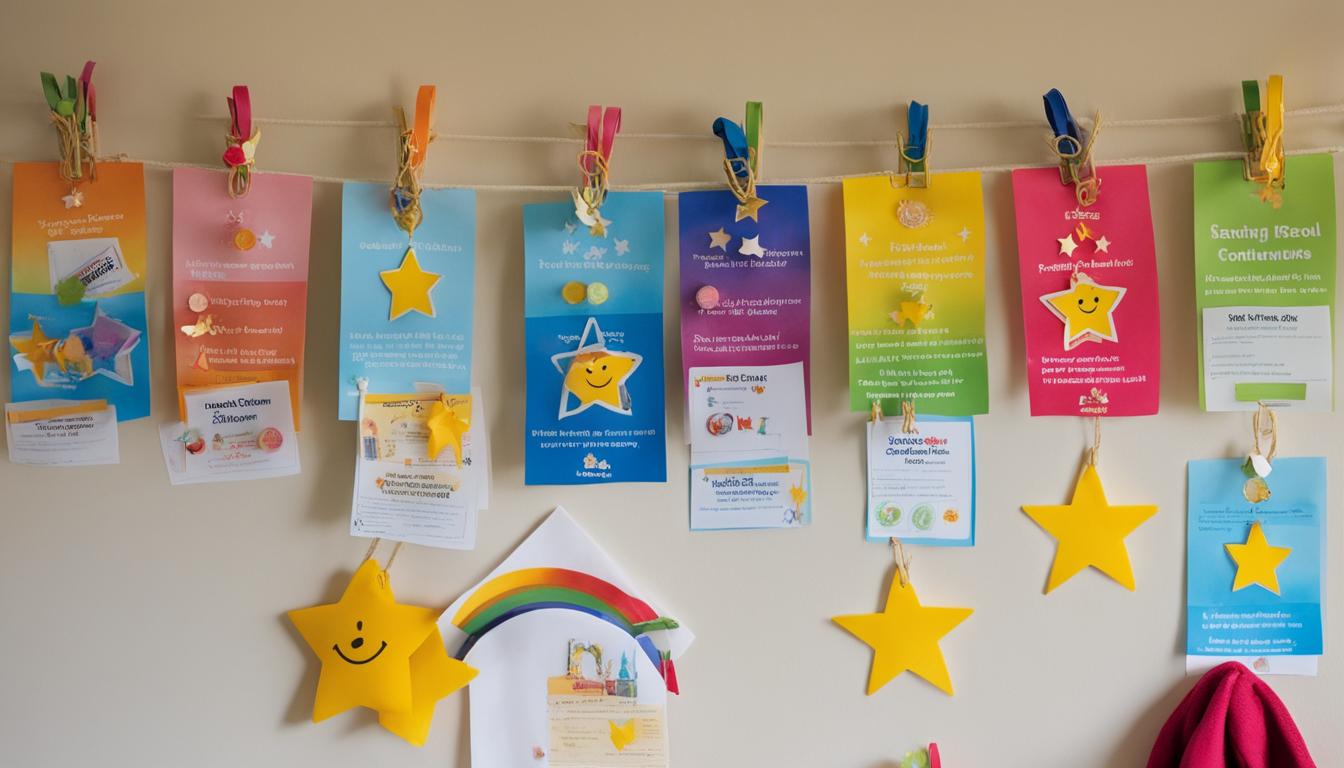Overnight Sleeping Arrangements For Child Visitation
Ensuring appropriate sleeping arrangements for child visitation can significantly alleviate the apprehension that both parents and children might experience during these pivotal encounters. Tailoring these arrangements to cater to the child’s comfort, such as designating a separate bedroom for them, is an indispensable aspect of creating a positive and nurturing atmosphere. The need for personalized sleeping spaces becomes more pronounced as the child grows older, emphasizing their need for privacy and their own space.
Understanding Child Visitation Rights
Grasping the essentials of child visitation rights can offer a strong foundation for creating fitting sleeping arrangements during overnight stays. These rights, typically determined by a family court judge as part of a custody agreement, serve to uphold the best interests of the child, maintaining a balance that allows both parents to participate actively in their child’s life.
Child visitation rights influence the living conditions for the child, particularly in the home of the noncustodial parent. In essence, these rights specify when and how the noncustodial parent can spend time with the child. The specifics can range from fixed time schedules to flexible, open-ended arrangements based on the parents’ mutual agreement.
Understanding these visitation rights is vital for both custodial and noncustodial parents to ensure they are fulfilling their obligations. Remember, these agreements are not just guidelines; they are court orders to be respected and upheld. It’s essential to realize that not abiding by these orders may lead to legal complications, ranging from revision of the agreement to penalties.
This is where legal advice can be beneficial. Lawyers and legal advisors can provide clarity on the state laws that apply to your child custody case and help you understand your rights and responsibilities under the child visitation agreement. This knowledge will serve as a compass as you navigate the landscape of overnight visits, helping you ensure a healthy and compliant environment for your child’s development.
Factors to Consider in Sleeping Arrangements
When planning the sleeping arrangements for child visitation, there are several crucial factors to take into account. The child’s age is a prime consideration, as the needs of young children vastly differ from those of older ones. Younger children may require the comfort of familiar toys or a favorite blanket, while older children may desire their own room to feel a sense of independence and personal space.
Safety standards should be paramount in setting up the child’s sleeping area. This might involve safety gates for very young children or securing windows and ensuring the room meets fire safety standards. The child’s sleeping area should also be in good condition—clean, well-lit, and free from hazards.
Moreover, the sleeping arrangements should adhere to the child’s best interests, a key principle of any custody arrangement. For example, having separate rooms for children of the opposite sex might be necessary, especially as children grow older and require more privacy.
Understanding the child’s preferences plays a significant role too. Involving them in decision-making about where they sleep can offer a sense of control and ease any anxiety about overnight visits. They might prefer a bunk bed or perhaps a cozy nook in the living room—it all depends on the individual child.
Finally, routine is paramount. Children often thrive with consistency, and maintaining familiar bedtime routines can provide a sense of security and normalcy amidst the transitions of visitation.
To navigate these considerations, it might be beneficial to seek the advice of child development experts or social workers. They can provide guidance tailored to the child’s age and developmental stage, ensuring the sleeping arrangements foster a safe and comforting environment.
Creating a Comfortable Sleeping Environment
Cultivating a serene and comfortable sleeping environment extends far beyond merely arranging a comfy bed or ensuring the child has their own bedroom. It encompasses curating an atmosphere steeped in familiarity to aid in the child’s sense of belonging and comfort. This could mean surrounding them with their cherished possessions, like a much-loved stuffed toy or a favorite storybook. Adopting a soothing bedtime routine also plays a crucial role in creating a positive atmosphere during overnight stays. Whether it’s sharing a bedtime story, enjoying a warm milk drink, or playing a soft lullaby, these routines can instill a sense of security and calm, promoting a good night’s sleep in their own space.
Dealing with Potential Challenges
Even with the best-laid plans, the journey of arranging overnight sleeping accommodations for child visitation can sometimes be riddled with hurdles. The way you tackle these potential challenges can profoundly impact the child’s comfort and overall experience during their stay.
Resistance or anxiety from the child is one of the most common challenges. The child might have difficulty adjusting to the new environment or feel anxious about spending the night away from their primary caretaker. In such cases, understanding the child’s perspective is crucial. Open conversations about their fears and reassurances about their safety can go a long way in easing their apprehensions. Using comforting tools like a favorite stuffed animal or a weighted blanket can also provide a sense of security.
Disagreements between parents regarding the sleeping arrangements can add another layer of complexity. A noncustodial parent might not have the same financial means or living space to provide an identical setup to the child’s primary home. It’s important, then, to find a balance between creating a similar environment and accommodating the constraints of the noncustodial parent’s living conditions. Constructive and respectful communication is key in navigating these disagreements.
Another challenge is maintaining the delicate balance between flexibility and consistency in sleeping arrangements. Life often brings about unexpected changes—a shift in the custody agreement, introduction of a new partner, or significant changes in the child’s life. Adapting to these changes while ensuring a stable and predictable environment for the child can be tricky. A steadfast commitment to the child’s best interests and mental health can guide you in making the best decisions during these turbulent times.
In all of this, it’s important to remember that each child’s needs are unique. What works for one child might not work for another. Therefore, a tailored approach, patience, and an open mind can be your most effective tools in overcoming these challenges.
Legal Implications and Guidelines
Navigating the legal landscape of child visitation can be complex, but understanding the legal implications and guidelines surrounding sleeping arrangements is a critical part of this journey. Legal requirements for suitable sleeping arrangements can vary, but generally, the noncustodial parent should provide a safe environment where the child has their own space to sleep, whether that’s a separate room or a well-equipped area within a shared space. State laws typically prioritize the child’s best interests, requiring parents to provide living conditions conducive to the child’s age, safety, and overall wellbeing.
Failure to adhere to these legal requirements can have serious consequences, potentially affecting the custody agreement or even leading to a revision of the court order. In cases where the child’s other parent isn’t providing appropriate accommodations, it’s advisable to seek legal advice promptly. Engaging a family court judge or social workers in extreme cases can ensure the child’s best interests remain paramount. Knowing the law and staying within its bounds not only protects parents but, most importantly, safeguards the children involved in the process.
Co-Parenting and Communication
The bedrock of successful overnight visits lies in the art of co-parenting and open communication. Having clear dialogues about the sleeping arrangements can preemptively address many potential conflicts. By laying out a detailed parenting plan that includes terms for overnight stays, parents can maintain consistency and ensure the child’s best interests are upheld.
Co-parenting challenges related to overnight stays may crop up—these could be disagreements over the child’s bedtime, the setup of their own room, or even the frequency of overnight visits. But with robust communication and a focus on the child’s needs, these issues can be navigated with diplomacy.
Furthermore, a supportive network plays a crucial role during such times, offering advice and solace when needed. This network could comprise family members, friends, or even support groups for parents navigating child visitation. Each of these elements come together to shape a healthier and more manageable co-parenting dynamic.
Understanding the Child’s Perspective
Grasping the nuances of overnight stays through the child’s perspective offers a fresh lens to understanding their feelings and experiences. This requires a generous dose of empathy and open communication, enabling parents to guide the child through this transition phase with sensitivity and care.
Overnight visits, especially the initial ones, can impact the child’s mental health. They may experience anxiety or may have queries about the changes happening around them. Creating a safe space where the child feels comfortable to express their concerns and questions is crucial to understanding their viewpoint.
For example, older children may wish to have their own room to maintain their privacy, while younger children might want their bedtime routine to remain unchanged. Acknowledging these needs and incorporating them into the sleeping arrangements fosters a sense of reassurance and belonging for the child. Remember, the goal is to make the child feel at home, no matter which parent they’re visiting.
Involving the Child in Decision Making
Including the child in decision-making processes can significantly shape their experience of overnight stays. This could involve simple decisions like the color of their bedding in their own room or which plush toy they want to cuddle up with. It’s a careful balance, however, between respecting a child’s wishes and making decisions that are in their best interests.
For instance, while a child may express the desire to stay up all night watching movies, implementing a consistent bedtime aligns more closely with their wellbeing. However, allowing the child to choose a special bedtime story can give them a sense of control and ease anxiety.
Encouraging the child to personalize their space can also foster a sense of belonging and comfort. If a separate room is available, they could decide on the decor or the placement of their bed. Giving them the autonomy to make these choices can make the transition smoother and the new environment feel more like a home away from home.
Managing the Morning After
The morning after an overnight visit can bring a unique set of challenges and emotions for both the child and the parents. Preparations to facilitate a smooth transition back to the primary home can significantly alleviate potential stress. These might include packing their belongings, ensuring they have their schoolwork if it’s a weekday, or maybe having their favorite breakfast.
Strategies to handle potential emotional fallout, like a calm discussion about any concerns or simply offering extra cuddles, can make a huge difference. Encourage open conversations about their stay, and reassure them that it’s okay to have mixed feelings about overnight visits.
Ensuring a consistent time schedule for the child to return back home can also provide a sense of security and routine. This is about making transitions as gentle as possible, reducing any potential strain on the child. Be mindful of their emotional state during this time, and ensure they know they’re loved and supported, irrespective of the custody arrangement.
Establishing Continuity Between Two Homes
Maintaining a sense of continuity between two homes can have a profound impact on a child’s wellbeing during overnight stays. This involves synchronizing parenting styles, rules, and expectations to provide a consistent living environment across homes. This might mean sticking to the same bedtime routine, using similar disciplinary measures, or maintaining equivalent safety standards in their sleeping quarters.
An older child might prefer having their own room in both homes, while younger children might find comfort in similar bedding or toys. By replicating elements of the primary home in the non-custodial parent’s home, a sense of familiarity can be nurtured, helping the child feel secure and at ease.
The benefits of such continuity are vast. It fosters a sense of stability and predictability that bolsters the child’s emotional and mental health. Furthermore, it supports their development by providing a consistent framework of rules and routines, which is particularly beneficial in managing transitions between homes.
Addressing the Role of New Partners
In the landscape of child visitation, the introduction of new partners can significantly influence the dynamics of sleeping arrangements. It’s essential to consider the impact of these new additions on the child’s comfort and overall experience during their stay.
The introduction process should be slow and considerate, allowing the child time to adjust to this significant change. The child’s best interests should always be the guiding principle, with an emphasis on maintaining a safe and stable living environment.
Changes in sleeping arrangements may arise with the introduction of a new partner—perhaps a move to a larger home, or adjustments to the child’s own space. Navigating these changes can be a delicate process, and it’s crucial to ensure respectful communication and cooperation amongst all parties involved.
Conflicts might arise, but remember: the child’s comfort, safety, and emotional well-being should always be the priority. Their feelings and concerns about these changes need to be heard, acknowledged, and addressed in a supportive and reassuring manner.
Resources and Support
As you navigate the intricate process of establishing sleeping arrangements for child visitation, know that you’re not alone—there are numerous resources and support structures to lean on. From legal advice to ensure you’re meeting state laws and court orders, to therapists who can help manage the child’s emotions during this transition, there’s a myriad of professionals ready to offer assistance.
Parenting groups, both in-person and online, can provide practical advice and emotional support. These platforms are often a goldmine of shared experiences, offering insights into diverse situations, potential challenges, and effective solutions.
In addition to external support, don’t overlook the importance of self-care. Navigating child visitation can be emotionally draining, so taking time to recharge is essential. Remember, your well-being directly influences your ability to provide a secure and loving environment for your child.
Remember the journey might call for continuous adaptation and improvement of arrangements, all tailored to the evolving needs of your child. It’s a journey worth taking, fostering bonds and memories that will enrich your child’s life in immeasurable ways. Remember, you have the resources, the knowledge, and the ability to make this a positive experience, one overnight stay at a time.










